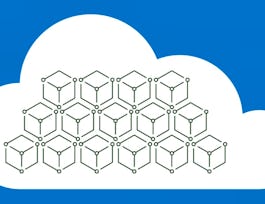Show your mastery of full stack application development by completing this capstone project! In this course, you will apply your knowledge and skills to a real-life inspired challenge and use your expertise to develop a successful solution.


Full Stack Application Development Capstone Project
This course is part of IBM Full Stack Software Developer Professional Certificate
Taught in English
Some content may not be translated



Instructors: Upkar Lidder
26,327 already enrolled
Included with 
Course
(136 reviews)
Recommended experience
What you'll learn
Combine and apply your JavaScript, React.js, Python, Node.js, and Express skills by completing a real-world project.
Build a real-world web application using front end and back-end technology.
Deploy your Django full stack web application on the cloud using containers and serverless.
Practice DevOps principles by employing CI/CD pipelines.
Details to know

Add to your LinkedIn profile
5 quizzes
Course
(136 reviews)
Recommended experience
See how employees at top companies are mastering in-demand skills

Build your Software Development expertise
- Learn new concepts from industry experts
- Gain a foundational understanding of a subject or tool
- Develop job-relevant skills with hands-on projects
- Earn a shareable career certificate from IBM


Earn a career certificate
Add this credential to your LinkedIn profile, resume, or CV
Share it on social media and in your performance review

There are 7 modules in this course
In this module, you will fork the GitHub repo containing the project template. This template includes the main Django application and a skeleton structure of the front-end and back-end. After that, you will clone the repo and work in the lab environment to create static pages for your dealership.
What's included
2 videos1 reading1 quiz1 app item2 plugins
In this module, you will create the user management system to allow users to register, login, and logout. You will also build your front-end for the Django Application to provide a graphic user interface (GUI) for user management.
What's included
1 reading1 app item
In this module, you will implement some endpoints in the Express application that transact with MongoDB. You will then containerize the Mongo and Express server using Docker and run it. Further, you will also set up Car Make and Car Model with Django Models and populate the database. You will then deploy a sentiment analyzer to the IBM Code Engine. Finally, you will create proxy services to access these external services.
What's included
2 readings1 quiz3 app items
In this module, you will add dynamic pages with REACT components to list the dealerships, filter the dealerships by State, view dealer details, and add dealer reviews.
What's included
1 reading1 quiz1 app item
In this module, you will set a CI/CD action flow for linting all the JS and Python files you have created. You will then run all the server-side components, including the Express-Mongo server in a Docker container and the sentiment analyzer serverless deployment on Code Engine. Finally, you will build the front-end REACT application and deploy the Django application on Kubernetes.
What's included
2 readings2 quizzes1 app item1 plugin
In this module, you will submit your work for peer review and also perform one peer review using the provided rubric and grading scheme.
What's included
3 readings1 peer review
In this module, you will apply your knowledge to enhance your Car Dealerships website. The module includes three labs, each offering a different enhancement to your portal. In the first part, you’ll enhance the front-end of your application by adjusting logic and addressing styling-related elements. The second part will help you enhance your application by developing a new back-end car inventory microservice and integrating it with the Django app back end. The third part is where you’ll construct and integrate the front-end that corresponds to the back-end enhancement implemented in Part 2. Following this, you’ll be elevating the output of your improved Django application.
What's included
3 app items1 plugin
Instructors



Offered by
Recommended if you're interested in Software Development
Why people choose Coursera for their career




Learner reviews
Showing 3 of 136
136 reviews
- 5 stars
77.37%
- 4 stars
13.13%
- 3 stars
1.45%
- 2 stars
5.83%
- 1 star
2.18%
New to Software Development? Start here.

Open new doors with Coursera Plus
Unlimited access to 7,000+ world-class courses, hands-on projects, and job-ready certificate programs - all included in your subscription
Advance your career with an online degree
Earn a degree from world-class universities - 100% online
Join over 3,400 global companies that choose Coursera for Business
Upskill your employees to excel in the digital economy
Frequently asked questions
Access to lectures and assignments depends on your type of enrollment. If you take a course in audit mode, you will be able to see most course materials for free. To access graded assignments and to earn a Certificate, you will need to purchase the Certificate experience, during or after your audit. If you don't see the audit option:
The course may not offer an audit option. You can try a Free Trial instead, or apply for Financial Aid.
The course may offer 'Full Course, No Certificate' instead. This option lets you see all course materials, submit required assessments, and get a final grade. This also means that you will not be able to purchase a Certificate experience.
When you enroll in the course, you get access to all of the courses in the Certificate, and you earn a certificate when you complete the work. Your electronic Certificate will be added to your Accomplishments page - from there, you can print your Certificate or add it to your LinkedIn profile. If you only want to read and view the course content, you can audit the course for free.
If you subscribed, you get a 7-day free trial during which you can cancel at no penalty. After that, we don’t give refunds, but you can cancel your subscription at any time. See our full refund policy.





